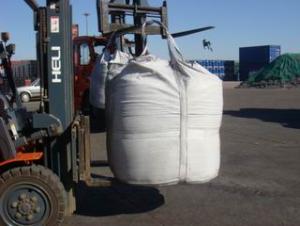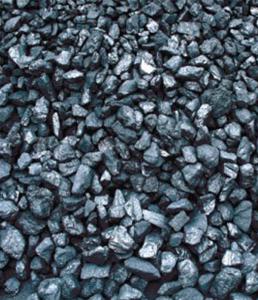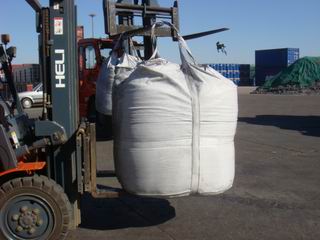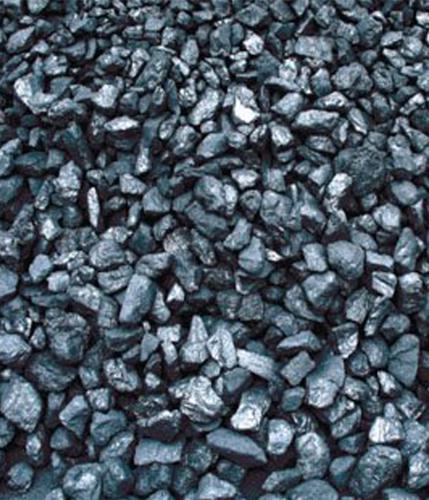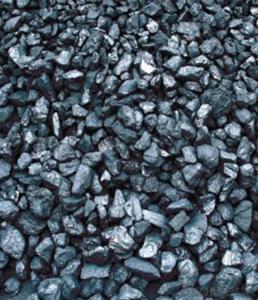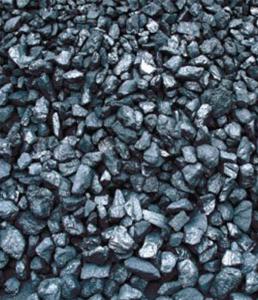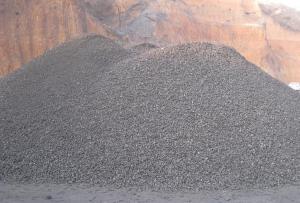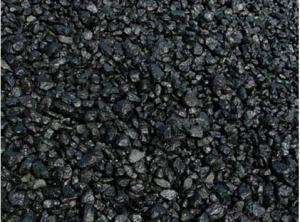Gas Calcined Anthracite made from Taixi Anthracite with low Sulfer
- Loading Port:
- China Main Port
- Payment Terms:
- TT or LC
- Min Order Qty:
- -
- Supply Capability:
- 4000mt m.t./month
OKorder Service Pledge
OKorder Financial Service
You Might Also Like
Introduction of Calcined Anhtracite :
It used the high quality anthracite as raw materials through high temperature calcined at over 2000 by the DC electric calciner with results in eliminating the moisture and volatile matter from anthracite efficiently, improving the density and the electric conductivity and strengthening the mechanical strength and anti-oxidation. It has good characteristics with low ash, low resistvity, low sulphur, high carbon and high density. It is the best material for high quality carbon products.
2: Usage:Calcined Anthracite coal is produced using the best Anthracite-Taixi Anthracite with low S and P, It is widely used in steel making and casting.
3: Package: In mt bags or to be discussed with the buyer
4:General Specification of Calcined Anthracite coal:
PARAMETER UNIT GUARANTEE VALUE | |||||
F.C.% | 95MIN | 94MIN | 93MIN | 92MIN | 90MIN |
ASH % | 4MAX | 5MAX | 6MAX | 7MAX | 8MAX |
V.M.% | 1 MAX | 1MAX | 1.5MAX | 1.5MAX | 1.5MAX |
SULFUR % | 0.5MAX | 0.5MAX | 0.5MAX | 0.5MAX | 0.5MAX |
MOISTURE % | 0.5MAX | 0.5MAX | 0.5MAX | 0.5MAX | 0.5MAX |
Size can be adjusted based on buyer's request.
5:Pictures of Calcined AnthraciteCoal:
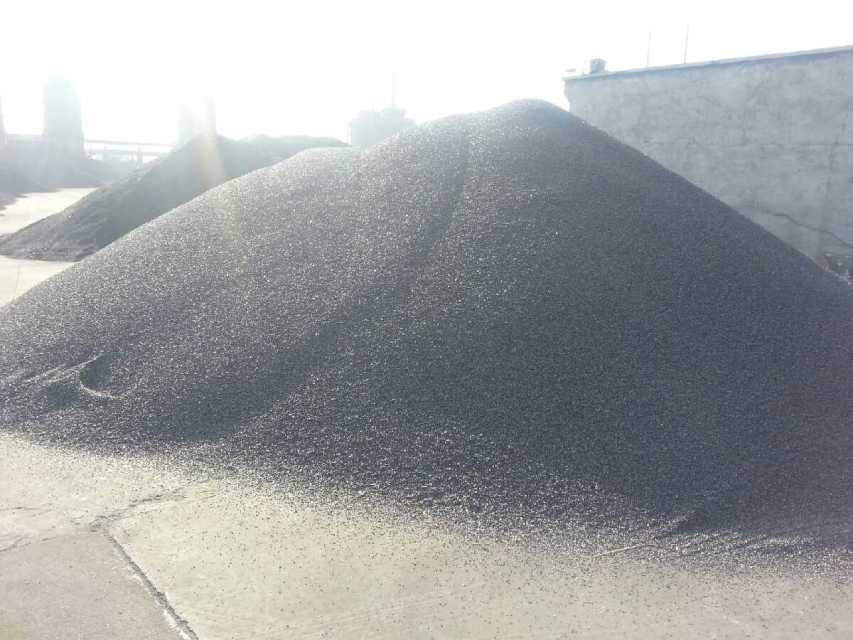
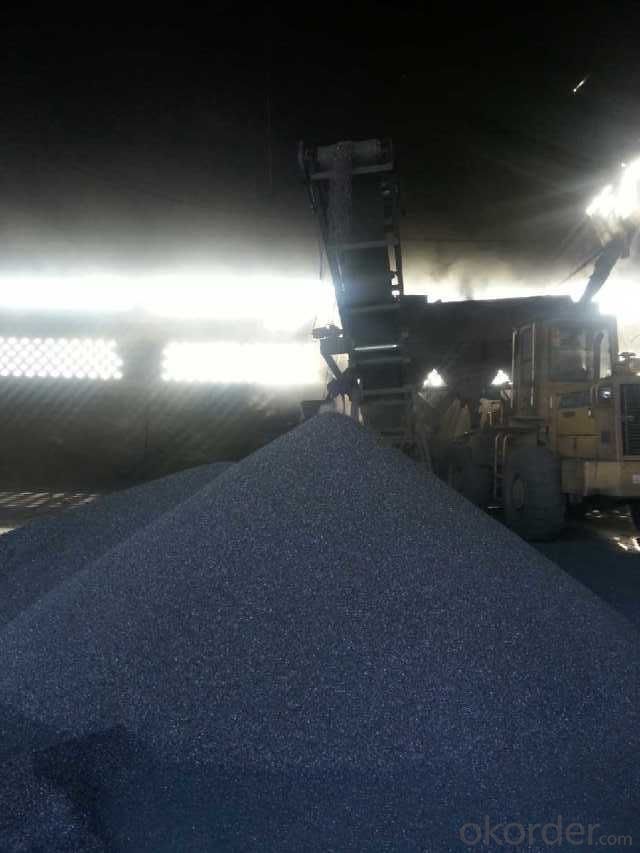


- Q: What are the consequences of increased carbon emissions on technological advancements?
- The consequences of increased carbon emissions on technological advancements can be both positive and negative. On one hand, the increased focus on reducing carbon emissions has spurred innovation in clean technology and renewable energy sources. This has led to advancements in technologies such as solar panels, wind turbines, and electric vehicles, which are considered more environmentally friendly alternatives to traditional energy sources. These advancements have the potential to create new industries, generate jobs, and promote sustainable development. On the other hand, increased carbon emissions can have negative consequences on technological advancements. The rising levels of carbon dioxide in the atmosphere contribute to climate change, which poses significant challenges to various sectors, including technology. Extreme weather events, such as hurricanes and wildfires, can damage infrastructure and disrupt technological systems. In addition, higher temperatures can affect the efficiency of electronic devices, leading to increased energy consumption and reduced performance. Furthermore, the need to mitigate and adapt to climate change through the development of clean technologies requires significant financial investments. This can divert resources from other areas of technological innovation and research, limiting advancements in fields such as artificial intelligence, biotechnology, or space exploration. As a result, the focus on addressing carbon emissions may reduce the overall pace of progress in certain technological areas. Overall, the consequences of increased carbon emissions on technological advancements are complex and multifaceted. While they have driven innovation in clean technologies, they have also presented challenges and trade-offs in terms of resource allocation and the impact of climate change on technological infrastructure. Efforts to reduce carbon emissions need to be balanced with ensuring continued progress in other technological fields to achieve a sustainable and technologically advanced future.
- Q: Which is better, 13 and 14 carbon breath tests?
- According to your case, carbon 14 is cheaper than 13, and the accuracy is the same
- Q: What do you stand for?Tar, smoke, nicotine, and carbon monoxide. What do you mean? What's the size of the smoke, or the size of the smoke? What's the connection? Smoking is harmful, so how do you choose to smoke smaller cigarettes?
- These three values referred to as physical and chemical indicators, my understanding is this: the Tar Nicotine tar is representative of nicotine. The carbon monoxide is simply to give the environmental protection department and health department occasional children get. Like the automobile exhaust mean.
- Q: What are carbon offsets?
- The use of carbon offsets is a method employed to aid in the reduction of greenhouse gas emissions and the fight against climate change. Essentially, it offers a means for individuals, organizations, or businesses to compensate for their own carbon dioxide (CO2) emissions by investing in projects that decrease emissions in other places. Carbon offsets are founded on the concept that emissions reduction can be accomplished through various methods and at different costs. Rather than solely focusing on reducing their own emissions, individuals or entities can utilize carbon offsetting to support projects that can achieve greater emission reductions per unit of cost. These projects encompass renewable energy, energy efficiency, reforestation, methane capture, and others. To obtain carbon offsets, individuals or organizations typically calculate their own carbon footprint by evaluating the amount of CO2 they emit through activities like energy consumption or transportation. After quantifying their emissions, they can purchase carbon offsets equivalent to the amount of CO2 they have emitted. These offsets are generated by projects that undergo independent verification and certification by recognized standards and registries. Once purchased, the carbon offsets are effectively canceled or retired, ensuring that the emission reduction accomplished by the project is not double-counted or claimed by another party. By investing in carbon offsets, individuals or organizations can effectively neutralize their own emissions and contribute to global endeavors to combat climate change. However, it is crucial to recognize that carbon offsets should not be viewed as a substitute for reducing emissions at the source. They should be utilized as a supplementary tool to support emission reduction efforts while simultaneously implementing measures to minimize our own emissions through energy efficiency, adoption of renewable energy, and sustainable practices.
- Q: How does carbon contribute to global warming?
- The greenhouse effect, caused by carbon, contributes to global warming. When carbon dioxide (CO2) and other greenhouse gases are released into the atmosphere, they trap heat from the sun, preventing its escape into space. As a result, the Earth's surface temperature increases and global warming occurs. The primary cause of carbon emissions is the burning of fossil fuels such as coal, oil, and natural gas for energy production, transportation, and industrial processes. These activities release significant amounts of CO2 into the atmosphere, which accumulates over time and intensifies the greenhouse effect. Deforestation and changes in land use also play a role in rising carbon levels. Trees and plants absorb CO2 through photosynthesis, acting as a natural carbon sink. However, when forests are cleared, the stored carbon is released back into the atmosphere. Additionally, the loss of trees reduces the overall capacity for CO2 absorption, aggravating the problem. The consequences of increased carbon emissions are extensive. Rising temperatures lead to the melting of polar ice caps and glaciers, resulting in sea-level rise and posing a threat to coastal communities. Moreover, carbon-driven global warming disrupts weather patterns, giving rise to extreme weather events like hurricanes, droughts, and heatwaves. To mitigate the impact of carbon on global warming, efforts must be made to reduce carbon emissions. This can be accomplished by transitioning to renewable energy sources such as solar and wind power, enhancing energy efficiency, promoting sustainable practices in agriculture and forestry, and implementing policies that encourage carbon capture and storage. Addressing carbon emissions is vital in combating global warming and its associated consequences. By comprehending the role of carbon in the greenhouse effect, we can work towards a sustainable future that minimizes the adverse effects of climate change.
- Q: How does carbon impact the pH balance of oceans?
- Carbon dioxide (CO2) dissolved in seawater reacts with water molecules to form carbonic acid, which lowers the ocean's pH. This decrease in pH, known as ocean acidification, has detrimental effects on marine life, especially organisms that rely on calcium carbonate to build their shells or skeletons. It disrupts the delicate balance of the marine ecosystem, affecting the growth, reproduction, and survival of various species, ultimately posing a threat to the biodiversity and health of our oceans.
- Q: What is carbon offsetting in the food industry?
- Carbon offsetting in the food industry refers to the practice of reducing or compensating for the greenhouse gas emissions produced throughout the food supply chain, from production to consumption. This is typically done by investing in projects that reduce emissions elsewhere, such as renewable energy projects or reforestation initiatives, to balance out the carbon footprint associated with food production and consumption.
- Q: What is the composition of carbon in stainless steel?
- (7) chromium can improve the hardenability and wear resistance of steel, and can improve the corrosion resistance and oxidation resistance of steel(8) vanadium; can refine the grain size of steel, improve the steel strength, toughness and wear resistance. When it is in the high temperature melt into austenite, can increase the hardenability of steel; on the contrary, when it is in the form of carbide exists, it will reduce the hardenability.(9) molybdenum can obviously improve hardenability and heat resistance of steel, prevent temper brittleness, and increase residual magnetism and attractive force(10) titanium can refine the grain structure of steel so as to improve the strength and toughness of steel. In stainless steel, titanium can eliminate or mitigate intergranular corrosion of steel(11) nickel can improve the strength and toughness of steel, and improve the hardenability. When the content is high, it can significantly change some physical properties of steel and alloy, and improve the corrosion resistance of steel(12) boron; when the steel contains a trace of (0.001 - 0.005%) boron, the hardenability of steel can be doubled and raised(13) aluminum can refine the grain structure of steel, restrain the aging of low carbon steel, improve the toughness of steel at low temperature, and can also improve the oxidation resistance of steel, improve the wear resistance and fatigue strength of steel(14) copper; its outstanding function is to improve the atmospheric corrosion resistance of ordinary low alloy steel, especially when used in combination with phosphorus
- Q: What are the effects of carbon emissions on the stability of the atmosphere?
- Carbon emissions have significant effects on the stability of the atmosphere. The primary consequence is the intensification of the greenhouse effect, leading to global warming and climate change. Carbon dioxide (CO2), the main greenhouse gas emitted by human activities, traps heat in the atmosphere, preventing it from escaping into space. As a result, the Earth's average temperature rises, causing a range of adverse impacts. One effect of carbon emissions is the alteration of weather patterns. Increased atmospheric temperatures can result in more frequent and intense heatwaves, droughts, and wildfires. Conversely, it can also lead to heavier rainfall and more frequent and intense storms, including hurricanes and cyclones. These changes in weather patterns disrupt ecosystems, agriculture, and water availability, posing risks to human health, food security, and infrastructure. Another consequence of carbon emissions is the melting of polar ice caps and glaciers. As the atmosphere warms, ice sheets in Antarctica and Greenland melt, contributing to rising sea levels. This poses a significant threat to coastal regions, increasing the risk of inundation, erosion, and the loss of valuable ecosystems. The displacement of coastal communities and the loss of land also create social and economic challenges. Furthermore, carbon emissions contribute to ocean acidification. When CO2 is absorbed by seawater, it reacts with water molecules, forming carbonic acid. This process lowers the pH of the ocean, making it more acidic. Acidic waters harm marine life, particularly coral reefs and other organisms that rely on calcium carbonate to build their shells and skeletons. The degradation of coral reefs not only affects marine biodiversity but also impacts the livelihoods of communities dependent on fisheries and tourism. The stability of the atmosphere is also impacted by the feedback loops triggered by carbon emissions. For instance, as the Earth warms, permafrost in the Arctic regions starts to thaw, releasing large amounts of methane, another potent greenhouse gas. This release of additional greenhouse gases further amplifies global warming, creating a vicious cycle. In summary, carbon emissions have profound effects on the stability of the atmosphere. They contribute to global warming, altering weather patterns, causing the melting of ice caps, acidifying the oceans, and triggering feedback loops. Addressing carbon emissions through sustainable practices, renewable energy sources, and international cooperation is crucial to mitigate these effects and ensure a stable and habitable atmosphere for future generations.
- Q: How is carbon used in the production of paints?
- Paint production utilizes carbon in multiple ways. An important application of carbon in paint production involves its use as a pigment. Carbon black, a type of elemental carbon, is commonly employed as a black pigment in various paint types. It imparts a deep and intense black hue, along with exceptional light absorption characteristics, making it ideal for creating dark tones in paints. Additionally, carbon plays a role in the formulation of specific paint types, such as carbon-based coatings. These coatings find application in scenarios demanding resistance against heat, chemicals, and corrosion. Industries like automotive, aerospace, and marine frequently employ carbon-based coatings, where durability and protection are paramount. These coatings can be applied to diverse surfaces, providing a high level of protection and extending the lifespan of the painted object. Furthermore, carbon serves as a filler material in certain paint varieties. Carbon fillers are added to enhance the mechanical properties of the paint, including strength, hardness, and resistance to wear and tear. They also contribute to the overall performance of the paint, augmenting its durability and longevity. In conclusion, carbon is an indispensable component in paint manufacturing, fulfilling roles as a pigment, a constituent of coatings, and a filler material. Its versatile properties make it a valuable addition to various paint formulations, enhancing the aesthetic appeal, durability, and performance of the final product.
Send your message to us
Gas Calcined Anthracite made from Taixi Anthracite with low Sulfer
- Loading Port:
- China Main Port
- Payment Terms:
- TT or LC
- Min Order Qty:
- -
- Supply Capability:
- 4000mt m.t./month
OKorder Service Pledge
OKorder Financial Service
Similar products
Hot products
Hot Searches

